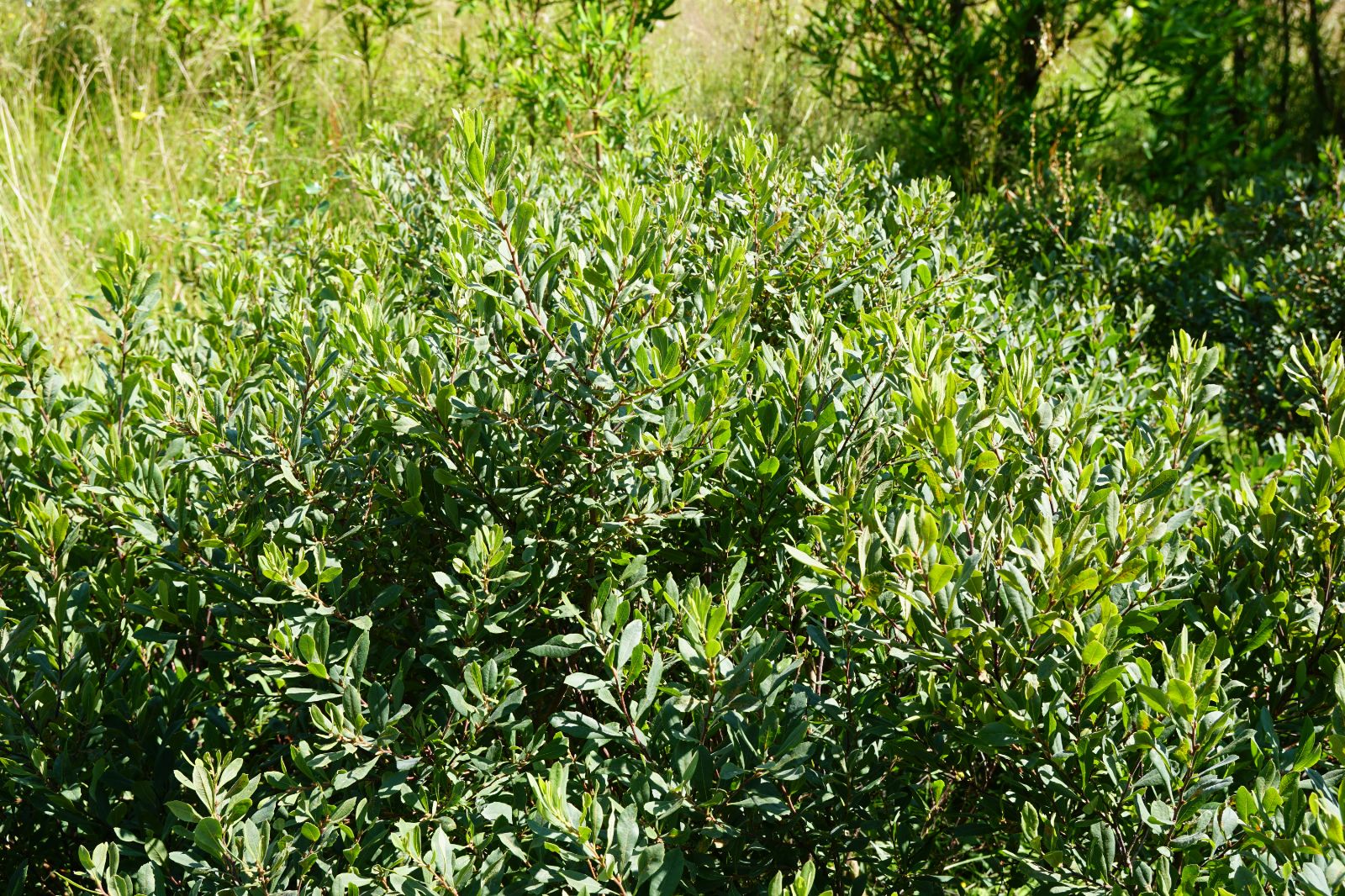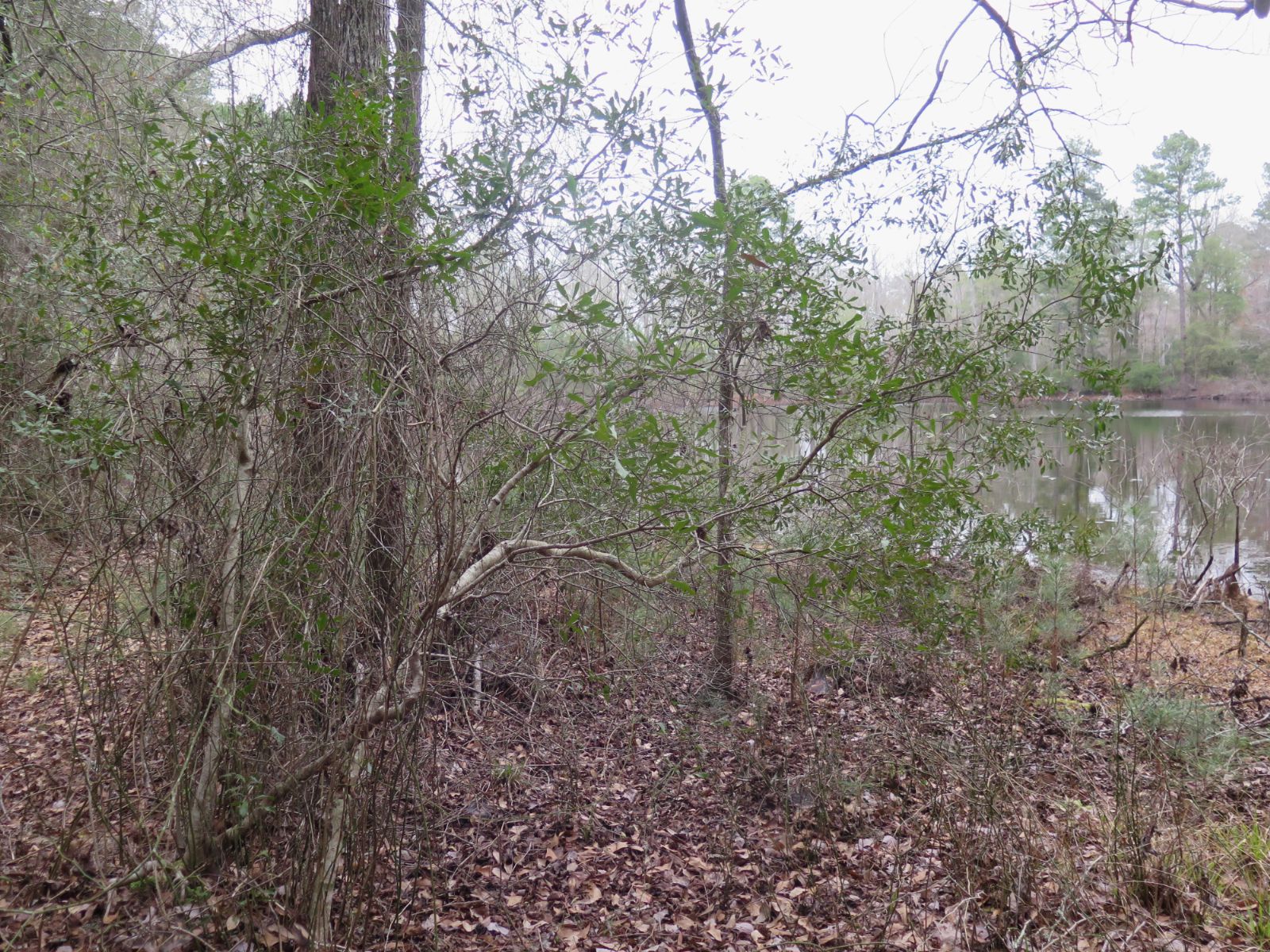Myrica cerifera
Credits
Article from Bean's Trees and Shrubs Hardy in the British Isles
Recommended citation
'Myrica cerifera' from the website Trees and Shrubs Online (treesandshrubsonline.
A deciduous, or more or less evergreen shrub in this country, but said to be at times a small evergreen tree, 20 to 40 ft high in the wild; young shoots reddish, downy. Leaves narrowly obovate or oblanceolate, very variable in size in different forms, the largest 41⁄2 in. long and 2 in. wide, but normally 11⁄2 to 3 in. long, 1⁄3 to 3⁄4 in. wide, usually toothed towards the apex, glossy green and glabrous above, dotted with yellowish resin-glands beneath, and downy on the midrib; stalk 1⁄8 to 1⁄4 in. long. Male catkins 1⁄4 to 1⁄2 in. long. Fruits globular, 1⁄8 in. wide, coated with white glistening wax, stalkless, densely crowded in clusters of two to six on the growths of the previous year.
Native of the south-eastern United States; introduced in 1699. In the early part of the occupation by Europeans of its native region, this shrub was valued by the settlers for the wax yielded by the fruits. This white, waxy coating, which gives so distinctive a character to the plant in autumn, was removed by boiling, and then made into candles. According to Kalm, the Swedish traveller, these candles burnt better and more slowly than ordinary tallow ones, and gave an agreeable smell when extinguished. The species is very variable in leaf, especially in size and toothing.




